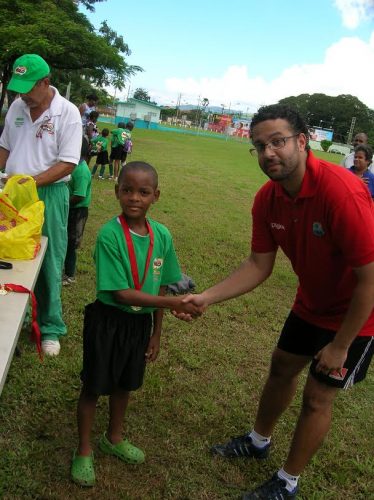Trinidad and Tobago give Sport for Life athlete development program a flamboyant makeover
 It may be a Canadian invention, but if Sport for Life’s Long-Term Development in Sport and Physical Activity framework was ever going to catch on in Trinidad and Tobago it needed some local flavour. According to Kabir Hosein, the former chief administrative officer for the countries’ athletics federation, there just wouldn’t be large-scale buy-in unless the population felt ownership.
It may be a Canadian invention, but if Sport for Life’s Long-Term Development in Sport and Physical Activity framework was ever going to catch on in Trinidad and Tobago it needed some local flavour. According to Kabir Hosein, the former chief administrative officer for the countries’ athletics federation, there just wouldn’t be large-scale buy-in unless the population felt ownership.
“We’re at the stage right now where we’ve formalized the developmental pathway and given it it’s own colourful name so people can relate to it. We’re a colourful and vibrant nation, so we figured we should have a colourful and vibrant plan,” says Hosein, who participated in Sport for Life’s Leaders School to get help with this work.

“We’ve found that quite often if we’re trying to adopt foreign concepts that have worked in other nations, it’s easier for us to accept if we add our own terms, our own phrases and our own photos.”
Trinidad and Tobago already had a reasonably successful track and field culture before the framework was introduced, but when Hosein first set out to implement it he found various places where they weren’t retaining talent like they should. They were seeing success at junior and senior levels, regionally and nationally, but then there was a steep drop-out rate.
“We examined that really closely to try to get a better understanding of what was happening there, and then we worked to fill some of those gaps we identified,” he says.
His goal was for athletes to start the sport at approximately age 7, and then follow a predesigned 10-year pathway that could ultimately end at the Olympics. With his vibrantly branded pathway, he worked to sell coaches, parents and administrators on the benefits of the various initiatives the plan called for. So far he’s pleased with the enthusiastic response.
Hosein worked with a committee, including Ian Carter, Dexter Voisin, Nadine Hamid and Michelle Alleyne-Pennie.
“Some of the elements already existed, but the strategies to get them all linked I wouldn’t have been able to do without the support of the other professionals in Leaders School with me. We had monthly group share sessions, and I was able to use some of the teachings from Carolyn Trono,” he said.
He saw examples of other people doing the same sort of work as him.
“I was able to use those references and models, and though some things didn’t work perfectly we ended up using our own special approach. Of course there’s always room for improvement.”


